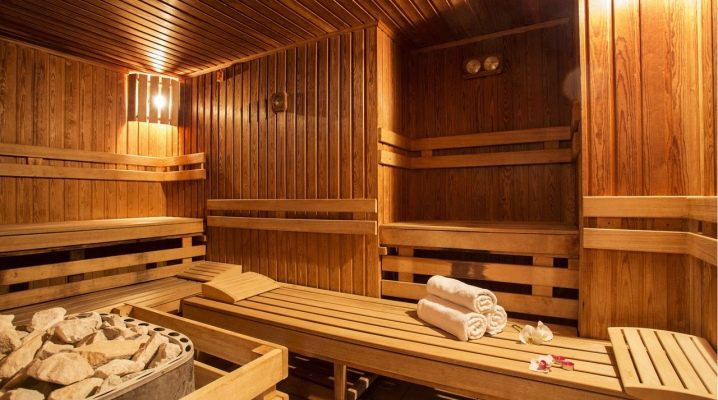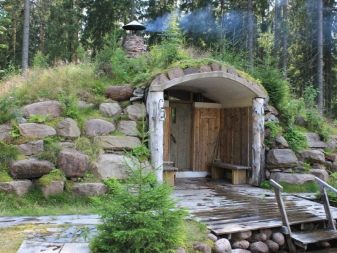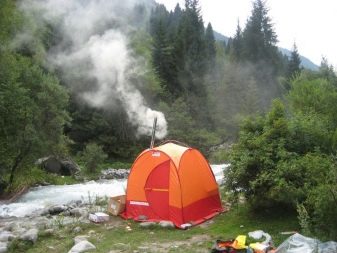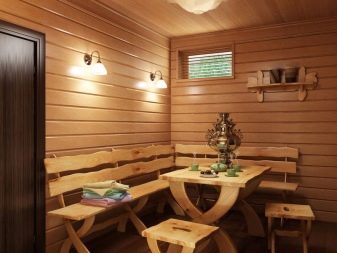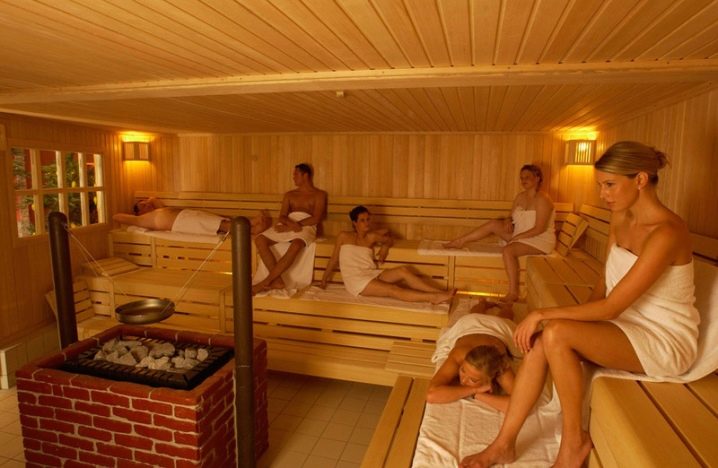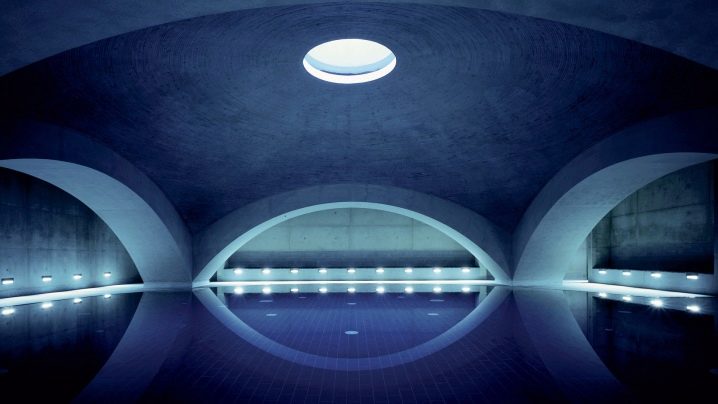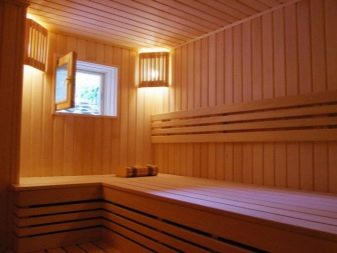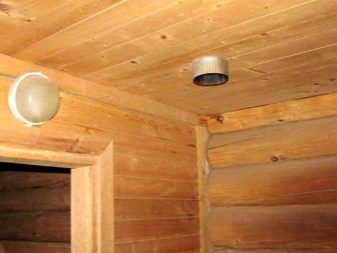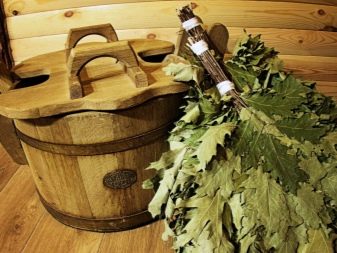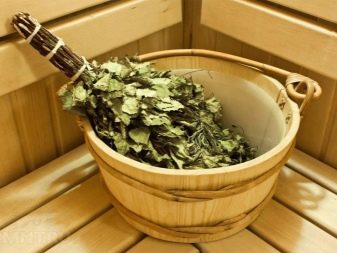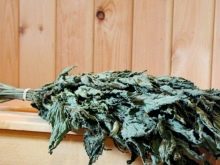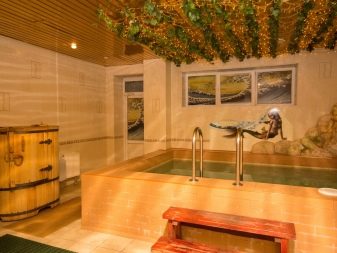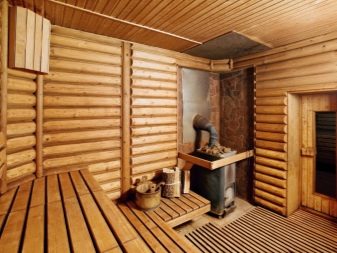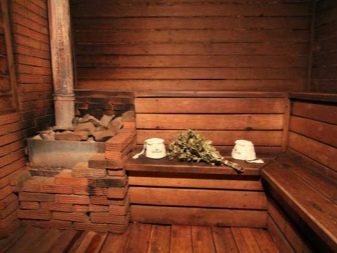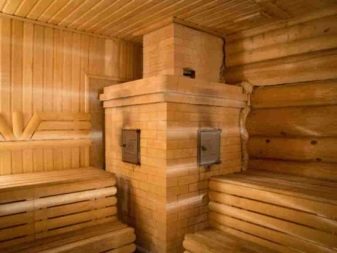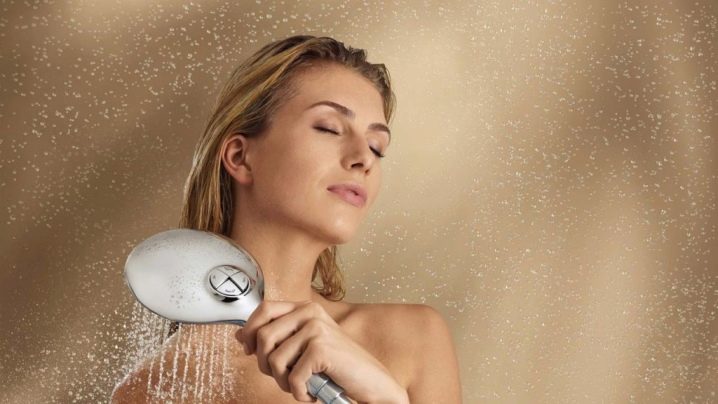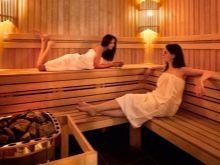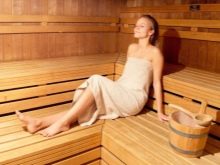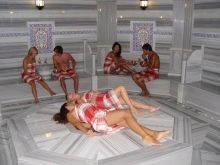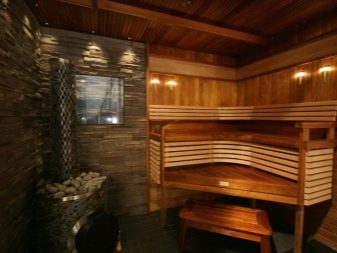What is the difference between a sauna and a sauna?
In the world there are many varieties of all kinds of baths and saunas. In Russia, the bath was considered a loyal assistant, relieving from many ailments. In Japan, it is called furo. There are a lot of opinions about which of the baths is most useful for a person, since in most cultures it has become the embodiment of certain traditions, where there are rituals and methods of warming and rejuvenating the body.
Some people today do not see the fundamental differences between a sauna and a bath. We will talk about their features, advantages and disadvantages today.
Design features
Russian bath is a separate building of coniferous wood with a waiting room and steam room. The furnace is laid out of brick and cast iron.
The Finnish sauna has many types of steam rooms:
- sauna tent;
- sauna barrel;
- forest sauna;
- earth sauna.
The Finnish steam room is easily installed in the apartment, for the construction device they use wood - cedar or aspen. Unlike baths, there is always a shower.
The largest steam room is located in the Turkish baths., because it includes a technical room, rooms with different levels of heating and a locker room. Steam is supplied through a hot air pipe. In the walls are pipes with water. Water boilers produce steam and through small holes it falls into the steam room.
Saunas and baths perform the same tasks, since they are helpers for a person in an effort to be healthy and attractive. Baths were used in ancient Rome, in Russia, and represented a place for washing, where the body simultaneously contacts hot air and water of different temperatures.
Differences and similarities
Each culture, where a traditional bath or sauna is present, has unique features of carrying out healing procedures, but they are carried out according to a similar technique, which unites them: thanks to a couple, slags and other toxic substances and decomposition products are removed from the body through sweat glands.And from high temperatures, the molecular structure of pathogenic microorganisms is destroyed, which die as a result.
In addition to the effectiveness of baths and saunas in terms of recovery, they also give pleasure from a kind of pastime, relaxation and rest, which, in turn, has a healing effect on the psychological health of visitors.
Previously, both baths and saunas were heated with the help of firewood and coal, the modern versions have undergone some changes due to technical progress. Although Russian baths are still heated with wood, modern saunas mostly have electric heaters. In the baths, the stove works this way: the stones are inside the stove and the door is closed.
When it is necessary to increase the temperature, it is opened and water is poured onto the hot cobblestones, steam is formed by evaporation of water and the door is closed again. The level of heat of the stones depends on the heat in the room. Stones have good properties for a long time to keep warm, and a closed sash only enhances this effect.
In the sauna, this process is somewhat different - the stones are located on an open surface, they do not pour water on them,since at high temperatures you can easily get burned by steam. On electric models in general, pouring water is prohibited.
There is a Turkish version of the sauna, where the humidity is about 100%, at a temperature of 45 ° C. The German bath is different from the Russian in that it is not divided into female and male. Usually the room is divided into zones - in one there are pools and slides, in the other there are steam rooms. In the latter are both men and women. Stones in the German steam room are watered, additionally using essential oils.
There are unusual German steam rooms, for example, a sauna-cinema or a sauna-planetarium.
Temperature and humidity
The main difference between a bath and a sauna is a pair. Due to the difference in the location of the stones, in the first case it will be wet, in the second - dry. It is very easy to feel this difference, and also to see the difference of this indicator by comparing the level of humidity in two rooms: in the bath it varies between 40-70%, in the sauna the optimal value is 6-8%.
In the baths, the normal temperature is 50-70 ° C, in the sauna it should not be below 90 ° C. Due to the low level of humidity in the steam room, it is easily tolerated by a person, except when there are contraindications for health reasons.
Thus, it turns out that in the bath less hot and more humid, and in the sauna - on the contrary.
Ventilation
The functionality of the steam room directly depends on its competent organization in both rooms. The bath is also different from the sauna by way of ventilation. The ventilation device in the latter is performed inside and outside with the same pressure. In the baths, an excessive pressure is formed, due to which the formation of steam occurs.
The difference in pressure level favors the formation of light steam, which in turn reduces the risk of heating the air too high. The hottest steam accumulates at the top, due to which the soaring process takes place more intensively on a high bench.
Attributes
The use of a broom - the fundamental difference between the Russian bath. It has a wonderful aroma, which is only enhanced by moisture. A massage with a warm broom is not limited to a relaxing effect, since the beneficial components contained in the plant penetrate through the open pores into the tissues when patting, where they begin to work as strengthening and revitalizing compounds. Of course, the quality of raw materials is also important.from which they made a broom for a bath.
There are several varieties of this integral attribute of the Russian sauna.
- Broom from oak branches - its main property is the ability to release tannins under the influence of high temperature. It is recommended for use for visitors with various skin problems, as it has a beneficial effect on it. In addition, phytoncides contained in the bark of the tree have a firming effect on the nervous system and blood vessels.
- Birch broom allows tannins and flavonoids, which are rich in wood, to penetrate under the skin. Birch leaves stick to the body, actively absorbing toxins and slags that are released through the pores under the influence of temperature and the massage effect of tapping a broom on the skin. A broom of such material is advised to use in a Russian bath to people suffering from various diseases of the respiratory organs, as well as experienced smokers.
- Broom collected from nettle leaves- a device for experienced and determined people. The plant incorporates a large amount of formic acid.
- Currant Broom made from the early shoots of this bush. It is recommended for people with influenza and colds.
- Coniferous broomsthat are collected from cedar, spruce or fir have wound-healing properties, have anti-inflammatory effect. They are advised to use with a strong cough. In addition, the needles improves mood and a beneficial effect on the nervous system.
For the manufacture of bath brooms often take branches of lime, eucalyptus, maple and rowan. Experienced bathhouse attendants make combined brooms that have a complex effect on a person.
The Finnish sauna does not involve the use of any brooms, since they will simply disintegrate when exposed to dry steam. Sometimes connoisseurs of this device use a broom in the waiting room of the Finnish sauna room - the effect of such an application will be much worse.
But the pool - an essential attribute of the nominal Finnish sauna. Its main task is to provide a contrast between the hot steam in the steam room and the coolness of the water.
Russian baths do not provide for the presence of pools, they are usually built near natural bodies of water or use cold water pouring from a bucket.And bathing in the winter in the ice-hole after the bath is a traditional and age-old Russian occupation, as a result of which an extreme temperature drop occurs, a lot of adrenaline is released, which also contributes to the rejuvenation of the body and obtaining maximum pleasure.
Effect on the body
The main function of the bath is to provide warming of the whole organism, due to which the removal of toxins and slags will occur. This process consists in sweating, with which harmful accumulations evaporate through the skin.
Too much heat is fraught with shock tissue. Therefore, sparing bath conditions, in comparison with the higher temperatures of the sauna, are several times preferable. Due to the softer heat, heating in the baths occurs gradually, which eliminates the risk of arrhythmia or vascular spasms. This scheme makes it possible to get a health effect from the bath even to those visitors who have problems with high blood pressure and heart disease. The Russian bath is an ideal place for the treatment of diseases of the respiratory organs, due to its visit, the volume of the lungs increases and the mucous membrane is regenerated.
But the Finnish sauna also has a number of positive nuances - in a state of stress, all vital systems of the body are activated, as a result of which maximum sweating begins. For people with poor health, a sauna is contraindicated, as the humidity level and temperature in the sauna are the same. Hot and dry air can provoke attacks of choking cough, as well as drying out mucous membranes.
The sauna room and its dry heat have a beneficial effect on the healing process in case of diseases of the urogenital system and liver diseases. It is not recommended to visit the sauna for patients with tuberculosis, nervous disorders and hypertension.
The effect of dry steam on the skin is the destruction of bacteria on the surface of the skin, as well as flushing of sebum, which clogs the pores and prevents them from “breathing”. In order to avoid skin contamination, immediately after the sauna, experts recommend taking a shower.
Among the differences can distinguish the behavior of visitors in the bath and sauna. In the first case, the pastime is more active in the steam room, because the massage is performed with a broom,you need from time to time to water the stones with water and steal steam, and in the sauna you can just sit or lie on the shelf.
In the Russian bath does not recommend to be more than 15 minutes at a time. To allow the body to cool, you need to leave the room for 5-10 minutes. In the Finnish steam room spend up to 10 minutes with breaks in the visits for half an hour. The number of visits should not be more than 3 times. In the Turkish bath you can steam for several hours.
But whatever the steam room, it is guaranteed to have a healing and firming effect on the person, although, due to its peculiarities, it affects the body differently.
What is better to choose?
When choosing between different types of steam rooms, personal preferences should be taken into account. An important role, of course, is played here by human health. Bath is at times preferable when the issue is considered from the point of view of health-improving measures. However, due to the constant improvement of technology, procedures in the sauna became available, because there are alternative heating devices with which the sauna in the dwelling is easily equipped.
A Russian bath can be built only in a private house, where there is a place for such a building in the courtyard. For the sauna does not necessarily need a large area, it can be very compact. The construction of a bath requires a certain surface and foundation with the compulsory thermal insulation of the room.
The main task in the construction of a sauna or a bath is the arrangement of the furnace and ventilation. However, in the option of arranging a sauna for the home, it can be limited to using a gas or electric heater. The construction of the sauna implies a sewage supply, since it will have a swimming pool, although a regular shower is quite suitable for home use.
For the Russian bath all of the above is not necessary, it will be enough to equip it near a well or near a small reservoir.
The fact that such a bath and how it differs from the sauna, see the following video.
